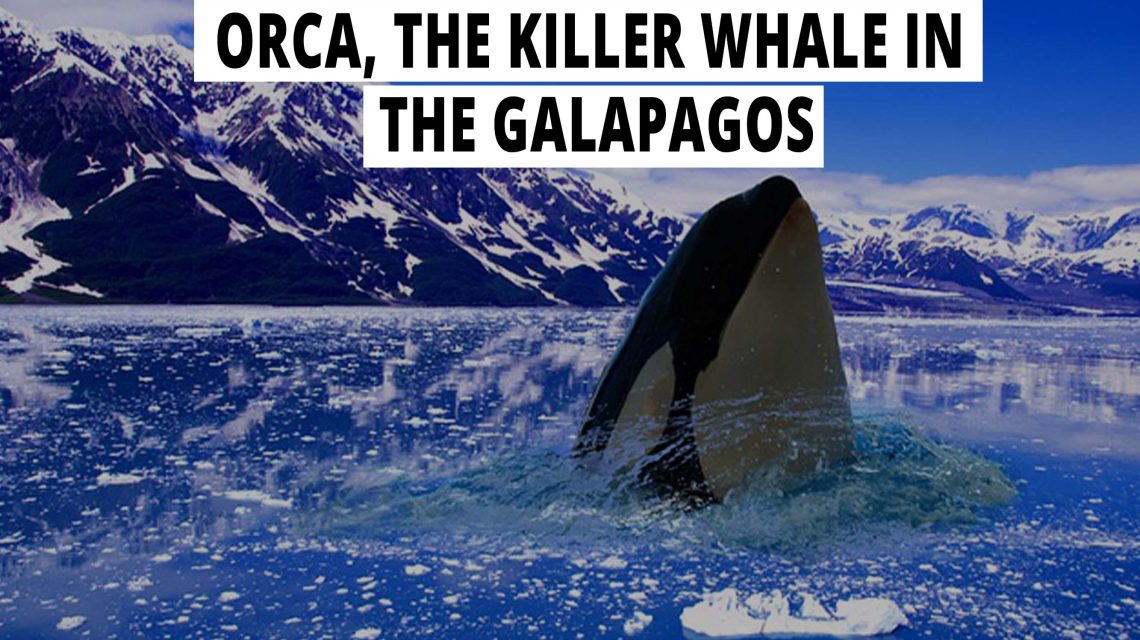History
The Orcinus got its name from the Latin word Orcus, which gives the meaning “of the netherworld”.The original name of the Orca is known worldwide by the name “Whale killer”.Orcas are predators in the ocean, and Orcas threaten all marine species. The scientific name for the killer whale is Orcinus orca, and it belongs to the Delphinidae family. The earliest fossils found of killer whale takes the history of their existence to 5.6 million to 2.6 million years ago, and it is named O.citinensis.The fossil has typical characteristics related to dolphins. The name orca comes from the name Orcinus which is derived from Orcus. The Orcus is an ancient name that is a mythological Roman of the netherworld. The Latin meaning for the name Orca is “the shape of a barrel.”
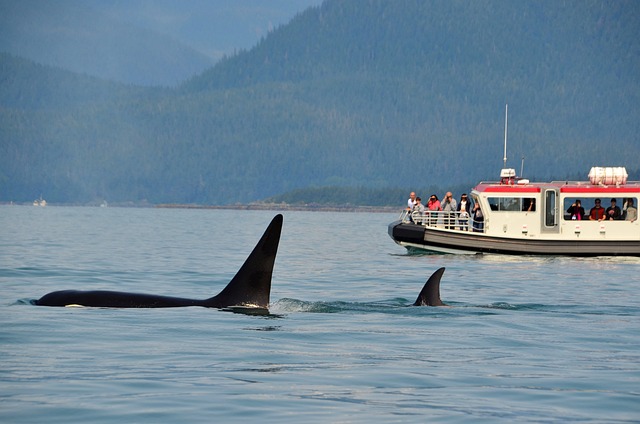
Distribution
Killer whales have distributed all over the oceans in the world. The killer whales’ population is spread from the polar ice caps to the equator. The distribution of killer whales in the world is as follows.
- In Southern Hemisphere-Argentina, New Zealand, Galapagos Islands and South Africa.
- In North Atlantic-Iceland, Norway, Labrador and Newfoundland.
- In the North Pacific-Alaskan coast, Washington and Columbia.
The “pods” are the smaller groups; the killer whales live with these smaller groups. The number of a pod is less than 40.
Appearance
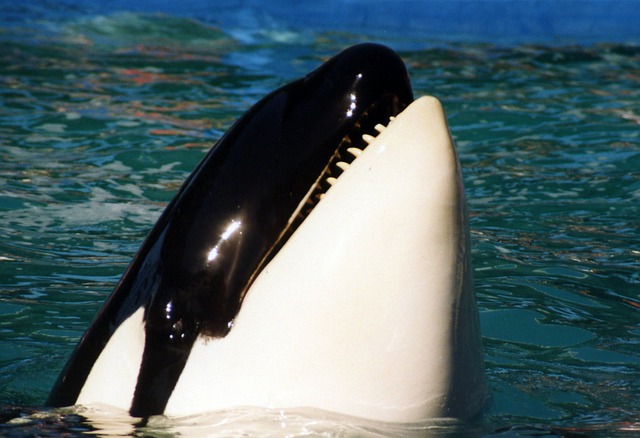
The Killer whale appears with a black body and distinctive white markings on its chest. The Killer Whale has a small white patch above and behind its eyes. Their appearance makes them a fearsome look. Female killer whales are more petite than male whales. Killer whales have large, rounded pectoral fins and a large dorsal fin. The largest males have a length of more than 10 meters and take a weight of 9800 kilograms, the females grow a height of 8.5 meters, and their weight is less than the male whales. The male whales have 6.6 feet long flippers, while the females have slippers that are 3.3 feet wide. The killer whales’ brains get 12.3 pounds from their total body weight. Comparing the teeth of other marine animals, killer whales have more prominent teeth, 4 inches long and 1.6 inches wide.
Diet
In general, the orcas feed on marine food and fish; they consume fish, seals, sea lions, dolphins, sharks and rays, giant whales, sea birds, cephalopods, porpoises and the big abundant fish tuna and salmon for their survival. The Orcas stick to one diet; once they know the food eaten by their family, it follows the same diet without switching; therefore, the Orcas can be considered picky eaters. In hunting activities, all pods(the social groups of killer whales)use effective and cooperative techniques to have good hunting; they are also similar to wolf packs.
Breeding
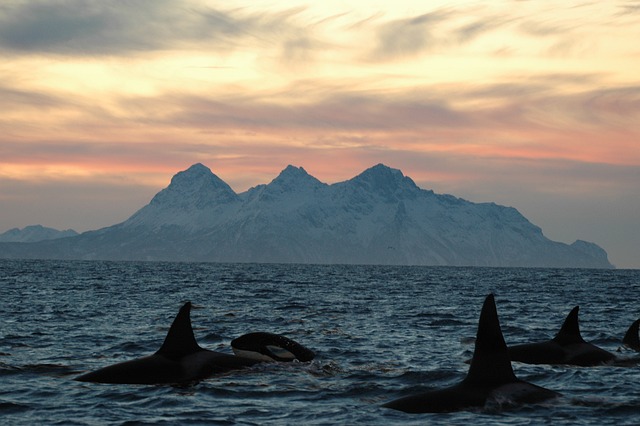
The sexual maturity of female killer whales comes when they reach the age between six to ten years and in size between 4.6 to 4.9 meters. When the male killer whale reaches the age of ten to thirteen and a length between 5.5 to 6 meters, it comes to sexual maturity. Mating and breeding are possible for any seasonal conditions. The gestation period of a female orca lasts for 17 months. The baby killer whales are called “calves”; calves are born under the water. Female killer whales take three to five calves at a time. At the birth time of the calves, they weigh 136 to 181 kilograms and grow longer, up to 2.6 meters. The calves grow with a thick, insulating layer of a bubbler with the help of the nourishment that they take from their mother’s milk. The mother’s milk consists of fat which helps the calves grow faster—the calves nurse for twelve months with their mother and under their protection. Until the calves reach their younger age, the mother glides in the horizontal position to train them to swim—the calves nurse below the water but somewhat close to the surface.
Type of Orca
There are several types and species of Orcas in the world. The orcas are divided into two species, each with different styles. The two main species are killer whales living in the Southern Hemisphere and the second in the Northern Hemisphere.
The type of Orcas in the Northern Hemisphere
- Type 1-North Atlantic Type
This type can be found in European countries, including Norway and Scotland. They are fish and sal eaters.
- Type 2- Killer Whale
Killer whales depend on other whales and dolphins.
The type of Orcas in the Southern Hemisphere
- Type A- This type mainly depends on minke whales, who migrate to find prey. This type lives in the Antarctic waters.
- Type B-The type has a small category and a large category.
- Small-The type B small category is named the Gerlaches Orcas. Their primary diet is the penguin.
- Large-The Pack Ice Orcas belong to the B type large category.
- Type C- Type C is named Sea Crcas, the smallest ecotype and usually found in eastern Antarctica.
- Type D- Type D Orcas are very rare and are called subantarctic orcas.
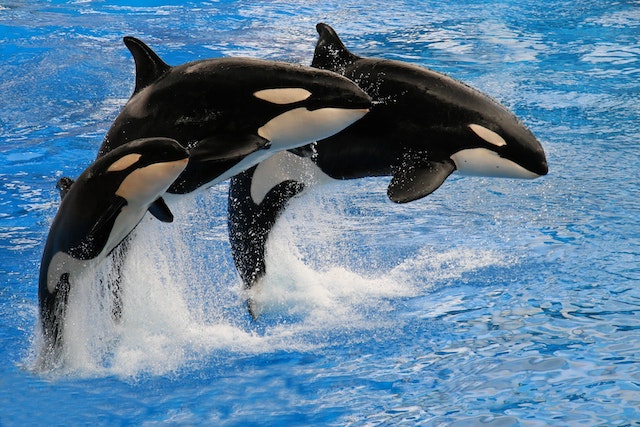
Orcas in Captivity
The orcas are marine social animals that humans use for entertainment purposes. In the Marin entertainment parks, the Orcas present themselves in performing shows for the audience; however, they do not thrive in captivity. The orcas need 40 miles of distance swimming to hunt their prey and for exercise, and they dive under the ocean water for 100 to 500 feet every day and several times a day. The captivation makes the orcas stressed and bored, that make changes their stereotypical behaviours with the wild Orcas. When these Orcas are captive, they merge with artificial social groups.
Conservation
The Orcas have yet to be listed as an endangered species worldwide. Yet the organization’s International Whaling Commission (IWC) is in the process of conserving the Orca creatures. There are regulations composed by the IWC for saving killer whales. The Marine Mammal Protection Act (MMPA) has also taken steps to protect killer whales, and it is named the “Endangered Species Act”.


